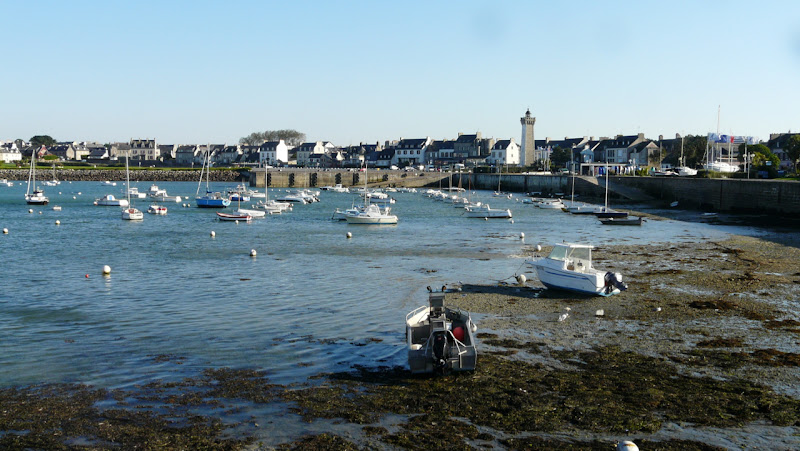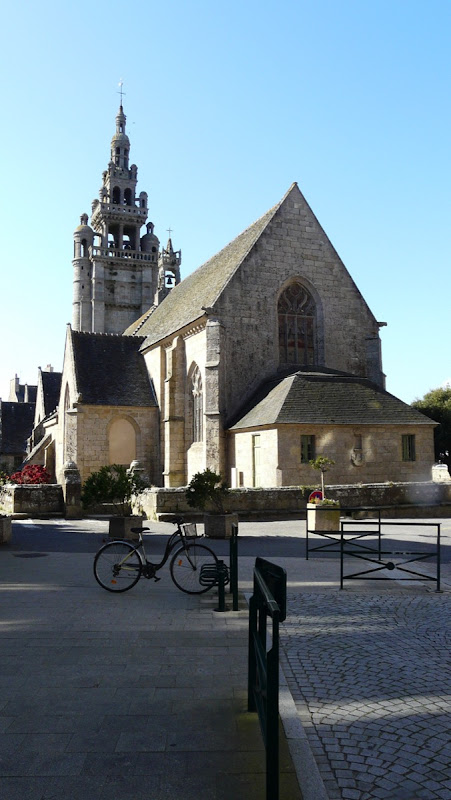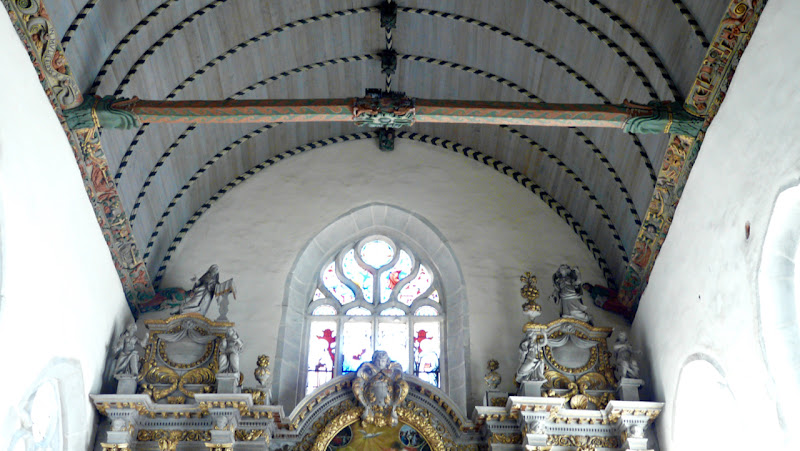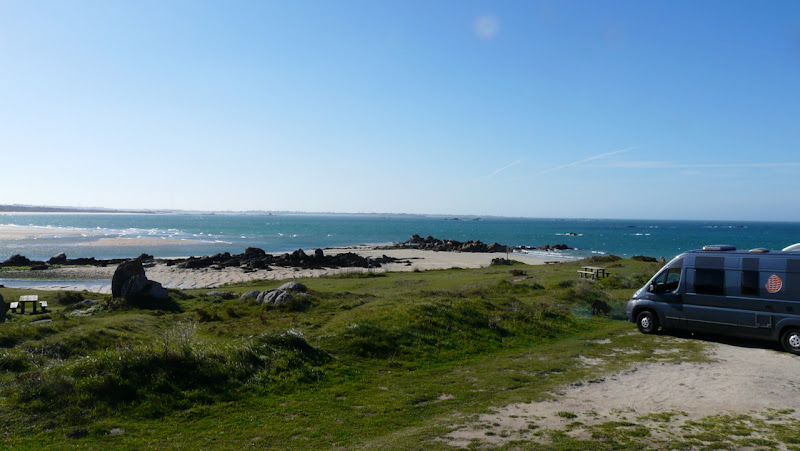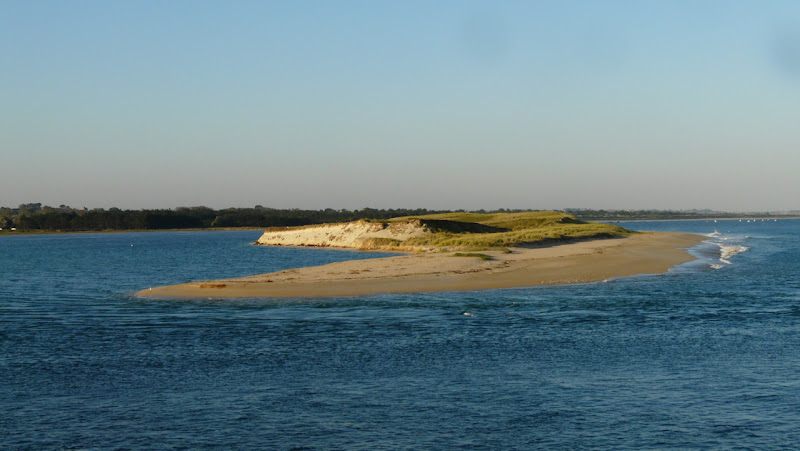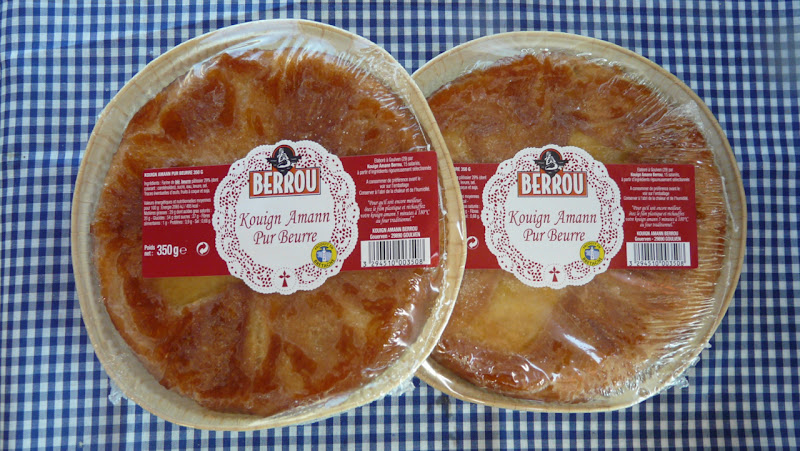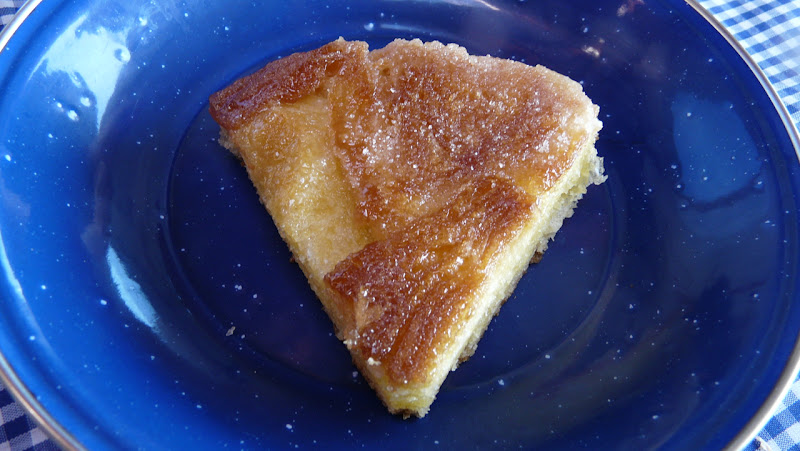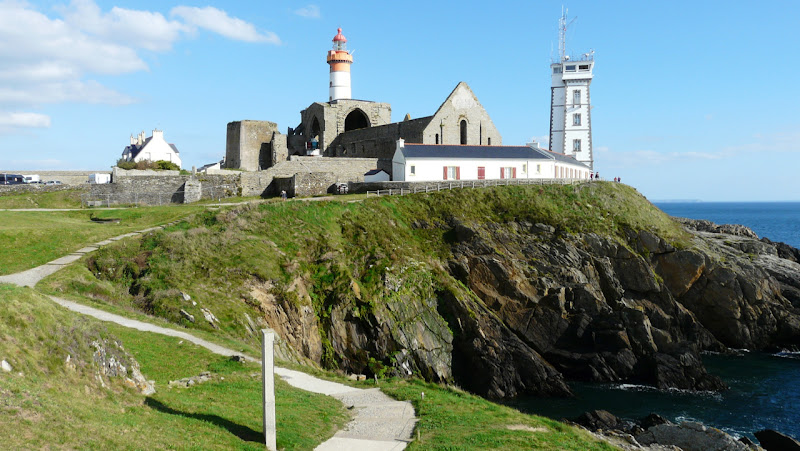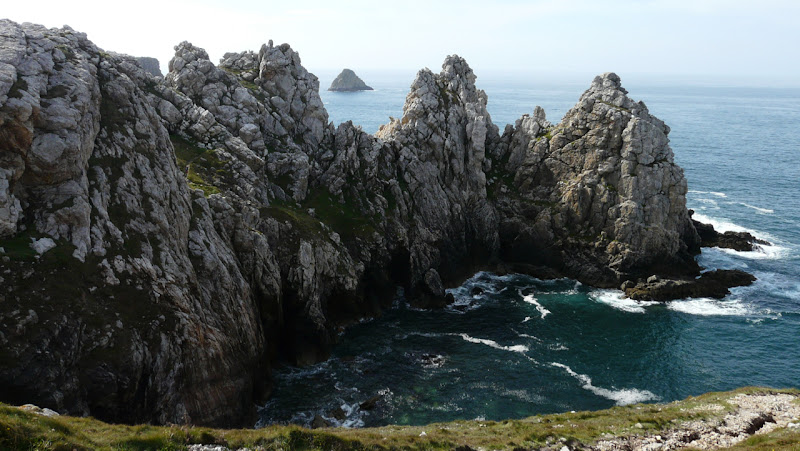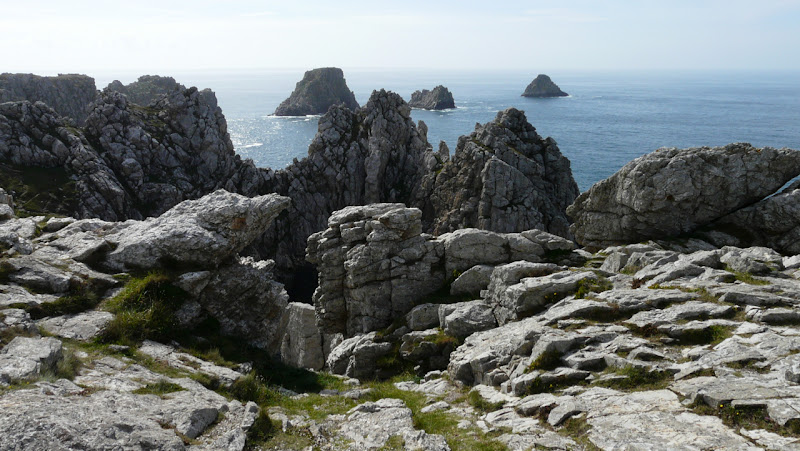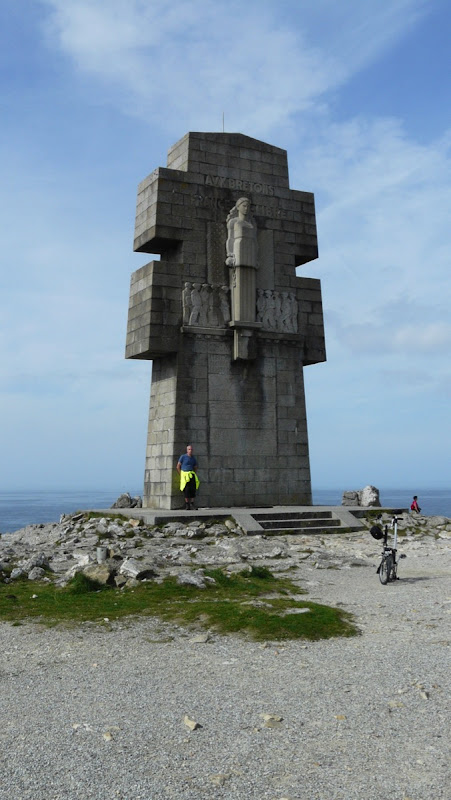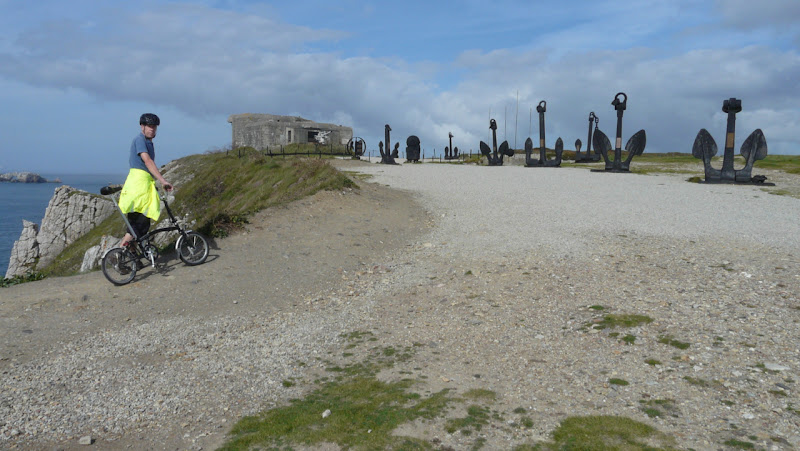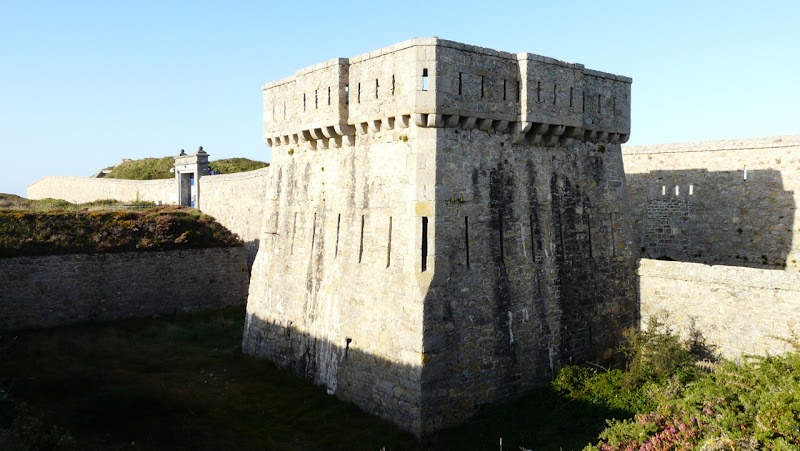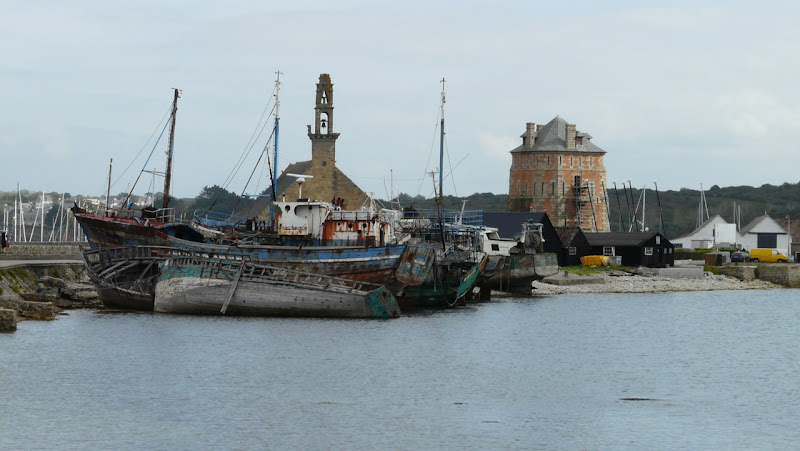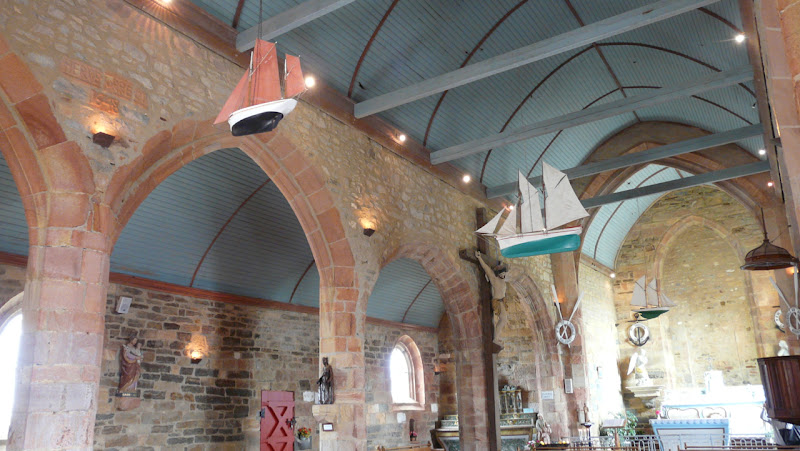After stopping the night at St Mathieu, we joined the locals on the beach at low tide and harvested some nice fresh moules which we enjoyed later in the day having tried unsuccessfully sea fishing off the pier at Le Conquet. Encouraged by our initial foraging we decided to return to the previous night stop to be ready for crab hunting the following morning! As it happens we were also treated to a display by a Pod of passing dolphins and a lunar eclipse of the Super Moon ….

The beach is a popular site with the locals who come to find crabs and moules at low water….

most arrived ‘tooled up’ for the occasion! (we just had a fishing glove, a pair of bent skewers, a plastic bucket and our surf boots!)
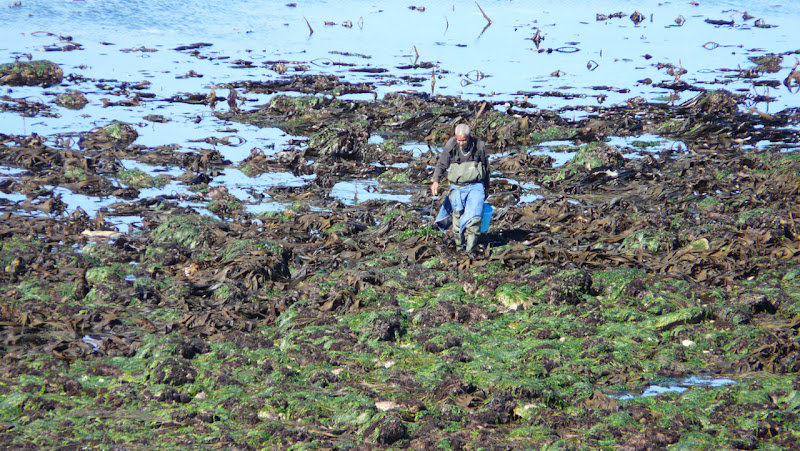
However we were successful and caught ten of these Velvet swimming crabs, also known as Devil crabs due to their highly aggressive nature and nasty nip! (which Kate can testify to, despite wearing the armoured glove!)
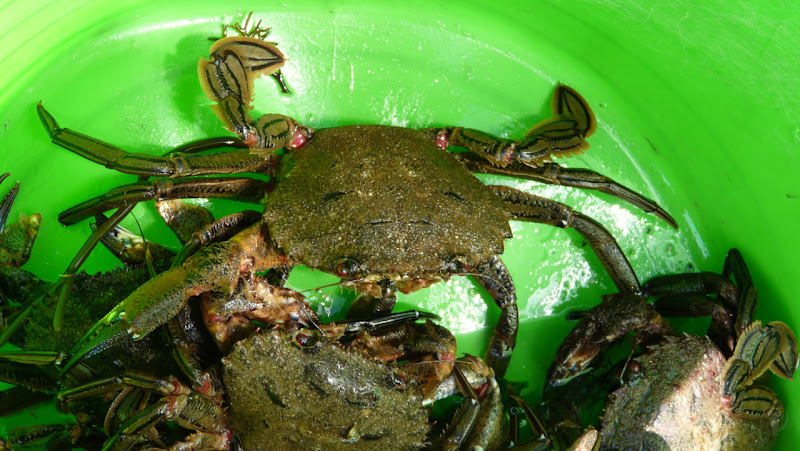
As they say, ‘revenge is a dish best served cold’…. so after cooking these little critters we chilled them and ate them later for supper with lots of fresh crusty baguette, salted Breton Butter and a couple of glasses of white wine…. ‘yummy’….

Spurred on by our recent success we re-located to St Cava in Lilia to try again the following morning (this time for larger Brown crab)….

The tide went out for miles and the made the rocky outcrops and islands accessible at low water where locals were this time shrimping and cockling as well. We found a few more Velvet crabs and plenty of small brown crabs which were unfortunately below the minimum legal landing size.
Despite our failure we thoroughly enjoyed our beach combing adventures….

Todays Fasting Fact: It was just as well we were on a fasting day……. nothing to eat! (well, nothing fresh from the sea anyway!)

